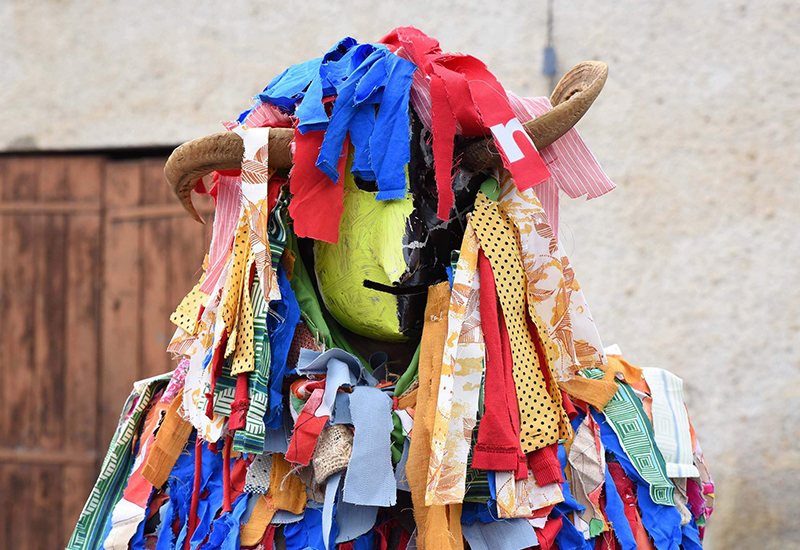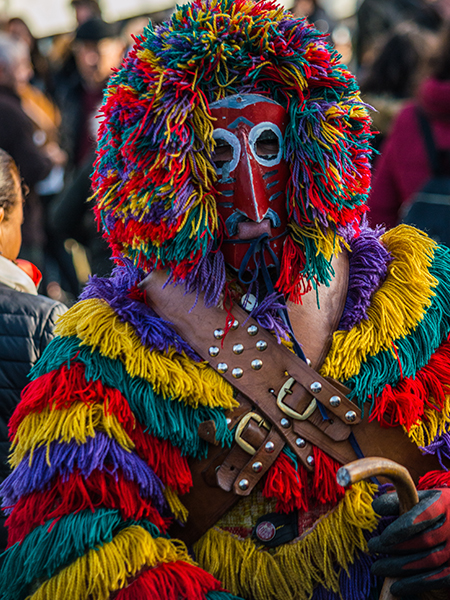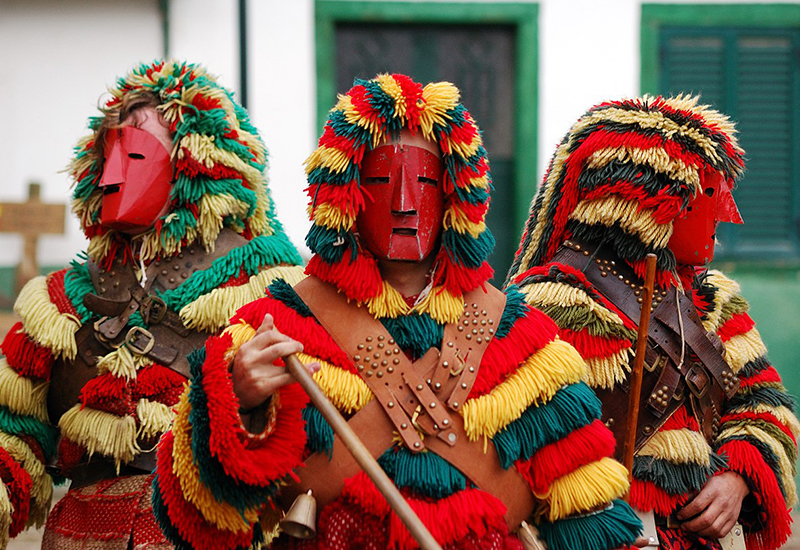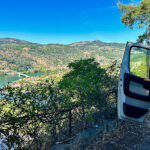December is arguably the most magical time of year when Christians come together to celebrate the birth of the baby Jesus in a stable. One festival, however, combines the ancient pagan rites of the winter solstice and the Christian traditions of Christmas into one carnival-like celebration.
The Festas dos Rapazes, or the “Boys Festival”, dates back to early pagan times and has slowly entwined itself into a Christmas tradition in the Braganza region and the surrounding areas.
The festival, predominantly featuring unmarried boys around the age of 16 years old, is a tradition that originates from ancient rituals of passage from adolescence to adulthood. It kicks off on Christmas Eve when the boys, known as the caretos (a name deriving from the masks they wear), host this annual “party” filled with parades, music, dance, and praise.
Meeting at the Casa da Festa (Festival House), a place chosen especially for the occasion, the boys eat a great feast hosted by their butlers, who were chosen the previous year, before preparing for the events that will soon unfold. Dressed in colourful costumes decorated with bells and tassels, and wearing the ornate masks, the boys parade around the town, accompanied by musicians and their butlers, egging the crowds to join in with the party-like atmosphere somewhat resembling a carnival.

The careto masks, which play a prominent role in the festival, take direct root from early Celtic pagan times. Unique to the Gallaeci and Bracari peoples in Galicia and northern Portugal, the careto was once seen as a ritual tool with spiritual properties. The origin of the masked people is linked to the cult of ancestors, considered privileged holders of powers. The elaborate mask enabled the wearer to watch over the fertility of the fields, men and animals and maintained civic law and morals. Made of wood and leather, the careto is worn as part of the costume, which has become the showpiece of the Festa dos Rapazes.
The handmade costumes consist of a hooded jacket and trousers, which are traditionally decorated with red, yellow, and green woollen tassels and fringes, and topped with collars fitted with bells and worn across the shoulders. Often, a belt strung with rattles is worn by the participants to “rattle” the women onlookers in a provocative way and they occasionally wave inflated pig bladders. If this sounds familiar, it shares a similarity with English morris dancing, which also has pagan roots.

Although the boys traditionally paraded around town causing havoc and throwing light-hearted insults to passers-by, the event has a more charitable side – the boas festas. This is when the boys go from door-to-door fundraising for worthy causes before making their way to the main church, where they take their seats near the high altar for midnight mass.
The boys are the first to kiss the statue of the baby Jesus laid in the nativity within the main parish church before leading the congregation to the town square for a continuation of song and praise, and telling stories of the past year under the backdrop of the town’s Christmas lights and the Christmas tree, which itself can be traced back to the early pagans in Germany.
The climax of the Festa dos Rapazes is a series of tests to find the winners who will be appointed as the butlers for the great feast at the next year’s event.
On Boxing Day, the boys have supper and at the end of the meal, the new stewards are appointed and the symbolic transferral of powers is given by the exchange of hats with a red ribbon with the ends hanging over the back as a distinguishing sign.The party ends with a dance in which the girls finally take part.
The Festa dos Rapazes comes to an end on the last day of Christmas, the 6 January, marking the arrival of the three kings, thus completing the twelve days of Christmas and the winter solstice, a journey in which paganism and Christianity meet harmoniously hand in hand to celebrate one of the most sacred times of the year.
Although it is predominantly celebrated in Braganza, several other towns and villages also pay homage to the Festa dos Rapazes, including Vinhais, Macedo de Cavaleiros and Podence, Vimioso, and the Alto Duro in Lazarim.
As we enjoy the festive season, it’s worth taking note, just as the folk in Braganza and surrounding areas have done, to enjoy the celebrations but also to remember how history has influenced the traditions we have today.
That just leaves me to wish you all a very Merry Christmas and a happy New Year, and if you’re visiting the Braganza region, make sure you watch out for the caretos!
Main image: Festa dos Rapazes – 2008 © Rosino













